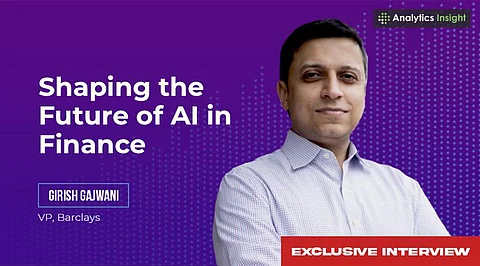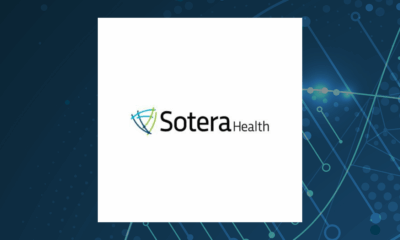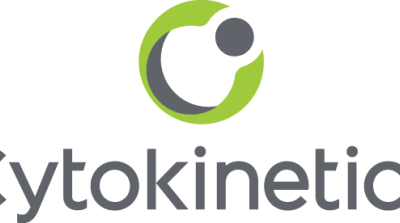Technology
Transforming Capital Markets: Insights from Girish Gajwani of Barclays

Financial markets are experiencing significant transformation, driven by advancements in predictive analytics, agentic AI, and hybrid cloud technology. These innovations are reshaping risk management in loan trading and securitization, allowing for faster and smarter decision-making processes. In an exclusive interview, Girish Gajwani, Vice President at Barclays, discusses how these technologies enable real-time insights and proactive financial workflows.
With over two decades of expertise in AI, cloud architectures, and modernization programs, Gajwani has played a pivotal role in the design and delivery of critical platforms across various financial sectors. He emphasizes that predictive analytics is shifting the industry from reactive risk management to a proactive model, especially in loan trading.
Predictive Analytics Shaping Risk Management
According to Gajwani, the evolution of predictive analytics is allowing financial institutions to analyze servicing data, borrower behavior, market sentiment, and macroeconomic indicators in real-time. This capability enables early detection of potential risks such as delinquency, prepayment, or refinancing pressure. Such foresight grants traders and risk managers the opportunity to act before these issues escalate into costly problems.
In the realm of securitization, predictive models can quickly simulate tranche-level cash flows and conduct stress tests, enhancing accuracy in pricing and structuring. By embedding these predictive insights into daily workflows, firms can evaluate portfolio risk exposures in minutes rather than relying on lengthy overnight processes. Gajwani notes that the industry is moving toward continuous, event-driven monitoring, where analytics not only describe current situations but also actively suggest next steps.
Challenges in Hybrid Cloud Adoption
While hybrid cloud technology is becoming the standard architecture within finance, Gajwani identifies integration and cultural challenges as significant hurdles. Legacy systems often hinder the seamless operation of new technologies, and without robust API governance, data practices, and compliance mechanisms, hybrid deployments risk becoming fragmented.
He outlines a three-pillar path forward:
1. **Technology**: Invest in containerization, event streaming, and interoperability standards to ensure systems communicate effectively.
2. **Compliance**: Automate security checks within DevSecOps pipelines to integrate controls as part of the release process.
3. **Culture**: Shift the mindset to view the cloud as a core component of the operating model, encouraging team accountability and lifecycle ownership.
Agentic AI and Its Adoption Barriers
The advent of agentic AI—capable of reasoning, planning, and acting—holds great promise for financial workflows, particularly in areas such as trade exception handling and compliance monitoring. However, Gajwani points out two major barriers to faster adoption: trust and explainability. In finance, decision-makers must understand the rationale behind AI-driven recommendations, as decisions often carry substantial risks.
Integration complexity also poses a challenge. Many workflows still operate on legacy batch systems, meaning that implementing real-time AI agents requires a re-architecting of processes for orchestration and auditability. Gajwani advocates for a “human-in-the-loop” approach, where AI agents propose actions that humans validate. As systems become more transparent over time, greater responsibility can be entrusted to these autonomous agents.
Future Technologies Transforming Capital Markets
Looking ahead, Gajwani highlights several emerging technologies poised to further transform capital markets in the next five years. Among these are:
– **Tokenization and Distributed Ledgers**: Transitioning securities, loans, and collateral onto tokenized platforms will enhance transparency, settlement speed, and liquidity.
– **Privacy-Preserving Computing**: Techniques such as Multi-Party Computation (MPC) will enable secure analytics across institutions without exposing sensitive data.
– **Quantum Computing**: This technology promises breakthroughs in risk modeling and portfolio optimization, potentially solving complex problems in near real-time.
– **Interoperability Standards like ISO 20022**: Enhancing data models to align with these standards is crucial for the future of real-time payments and risk reporting.
Gajwani asserts that leading firms are proactively preparing for these changes by running pilot programs, modernizing data foundations, and embedding compliance-by-design principles to facilitate quick scaling as new technologies emerge.
As capital markets evolve, speed, transparency, and resilience will be critical to maintaining competitiveness. While predictive analytics, hybrid cloud, and agentic AI are shaping the current landscape, technologies like tokenization, privacy-preserving compute, and quantum resilience are set to define the future. Success will hinge not just on technology adoption but on cultivating an environment that encourages innovation and responsible scaling.
-

 Technology5 months ago
Technology5 months agoDiscover the Top 10 Calorie Counting Apps of 2025
-

 Technology2 weeks ago
Technology2 weeks agoOpenAI to Implement Age Verification for ChatGPT by December 2025
-

 Health3 months ago
Health3 months agoBella Hadid Shares Health Update After Treatment for Lyme Disease
-

 Health3 months ago
Health3 months agoAnalysts Project Stronger Growth for Apple’s iPhone 17 Lineup
-

 Health3 months ago
Health3 months agoErin Bates Shares Recovery Update Following Sepsis Complications
-

 Technology5 months ago
Technology5 months agoDiscover How to Reverse Image Search Using ChatGPT Effortlessly
-

 Technology3 months ago
Technology3 months agoElectric Moto Influencer Surronster Arrested in Tijuana
-

 Technology2 months ago
Technology2 months agoDiscover 2025’s Top GPUs for Exceptional 4K Gaming Performance
-

 Technology5 months ago
Technology5 months agoMeta Initiates $60B AI Data Center Expansion, Starting in Ohio
-

 Technology5 months ago
Technology5 months agoRecovering a Suspended TikTok Account: A Step-by-Step Guide
-

 Health5 months ago
Health5 months agoTested: Rab Firewall Mountain Jacket Survives Harsh Conditions
-

 Lifestyle5 months ago
Lifestyle5 months agoBelton Family Reunites After Daughter Survives Hill Country Floods















